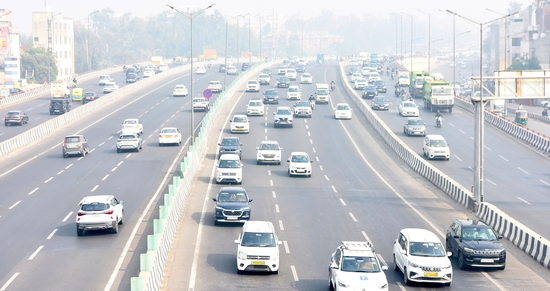Liberals pull off stunning upset to win Canada polls
The Liberal Party, led by PM Mark Carney, won the Canadian election but fell short of a majority, aided by rising nationalism amid U.S. tensions.
The Liberal Party won the Canadian general election, giving former central banker and incumbent PM Mark Carney a mandate to govern, a stunning turnaround in fortunes since his predecessor Justin Trudeau’s popularity plummeted. Carney’s gamble of triggering an early election, however, fell short of securing the majority he sought.

Carney’s party had about 43.6% of the national vote, securing or leading in 168 of the 172 seats needed for a majority in the House of Commons, meaning the government would be forced to work with other parties to pass budgets and other legislation. Under the tightest scenarios, the Bloc Quebecois, which runs candidates only in French-speaking Quebec, might hold the balance of power. The NDP with seven seats could also be involved, depending on the final tally for the Liberals.
The Liberals looked headed for a crushing defeat until US President Donald Trump started attacking Canada’s economy and threatening its sovereignty, suggesting it should become the 51st state. Trump’s actions infuriated Canadians and stoked a surge in nationalism that helped the Liberals flip the election narrative and win a fourth-straight term in power.
In a victory speech before supporters in Ottawa, Carney stressed the importance of Canadian unity. “We are over the shock of the American betrayal, but we should never forget the lessons,” he said.
Indian Prime Minister Narendra Modi congratulated Carney for his party’s victory in a post on X on Tuesday, saying he looks forward to working with the Canadian PM. Modi highlighted the “shared democratic values, a steadfast commitment to the rule of law, and vibrant people-to-people ties” between the two countries.
The comments signal easing tensions between Ottawa and New Delhi. Relations have been strained since Carney’s predecessor, Trudeau accused Indian officials in September 2023 of orchestrating the killing of Sikh activist and Canadian citizen Hardeep Singh Nijjar. India has denied involvement in the killing, which took place in British Columbia.
Since Carney took office in March, both sides have taken steps to cool an escalation in tensions and bolster cooperation to counter US President Donald Trump’s tariff threats.
Carney made his electoral debut by easily winning the riding (as Canadian constituencies are called) of Nepean in Ontario by a large margin, capturing nearly two-third of the votes polled. His principal rival, Conservative leader Pierre Poilievre, was defeated in Carleton, also in Ontario.
The New Democratic Party suffered the worst outcome, reduced to seven seats from 25 in 2021, with its leader Jagmeet Singh losing from Burnaby Central and announcing his intent to resign from the post once the party chose an interim leader.
Speaking in Ottawa in the early hours of Tuesday, Carney struck a unifying note: “I intend to govern for all Canadians.”
“Let’s put an end to the division and anger of the past. We are all Canadian and my government will work for and with everyone,” he said.
As threats of tariffs and annexation from US President Donald Trump dominated the campaign, Carney said he would negotiate from a position of strength. “We will chart a new path forward, because this is Canada and we decide what happens here.”
Meanwhile, in his speech Poilievre indicated he will remain as leader of the Conservatives, despite being unable to win a majority. “We know that change is needed, but change is hard to come by, it takes time, it takes work,” he said.
Given the party has increased its seats by 25, and vote share by nearly 18 per cent, there are no immediate calls for a leadership review.
Carney’s achievement was also stellar, as the election turned into a contest between the two main parties and, between them, they accounted for 85 per cent of the votes cast. Liberal support also grew, from 33 per cent in 2021, and was, in fact, higher than the 39.5 per cent the party received in 2015 under Justin Trudeau for a majority at the time.
However, Carney was left short by a handful of seats in the effort to reach the majority mark of 172 in the 343-member House of Commons.
But many ridings still remained too close to call with narrow margins separating the two principal contenders.
While the Liberals gained some seats in Quebec, those were offset by losses in Ontario, mainly in the Greater Toronto Area or GTA and their inability to make headway in the prairie provinces of Alberta and Saskatchewan.
Former Cabinet Minister Arif Virani told the network CBC News that Carney ran an “ambitious” campaign and that reflected in the results.
Trump’s intrusion into the race was evident as the Liberals under Carney were rejuvenated by his attacks, including those on Canada’s sovereignty, with his 51st state rhetoric. The other factor helping the Liberals was Trudeau’s exit, as he was incredibly unpopular in the last months of his tenure.
It allowed them to overcome a deficit of over 20 points against the Conservatives, who were even in December considered favourites to form the Government, and with a sweeping majority.
But, it did mark a remarkable entry into retail politics for the former Bank of Canada (and Bank of England) Governor. He entered the Liberal leadership race in January after Trudeau announced his intention to resign once that process was complete. Carney swept that race on March 9 and was sworn in as Prime Minister on March 14. Just six days later, he triggered snap elections, ahead of the October schedule.






